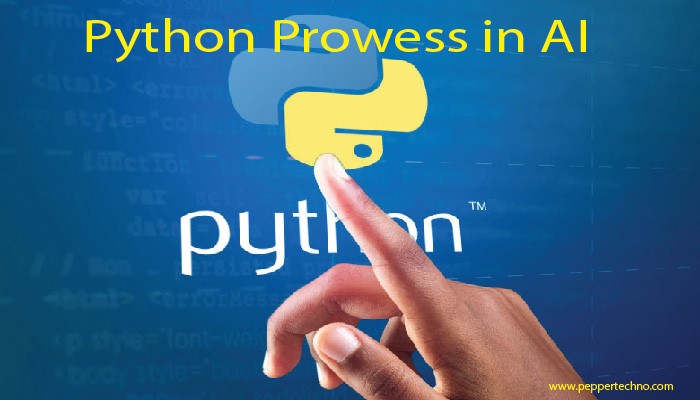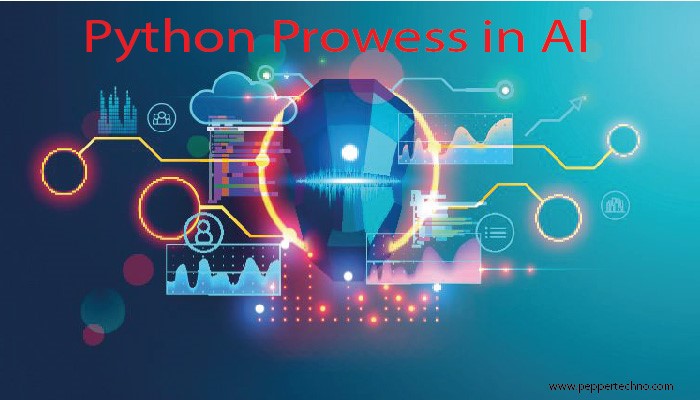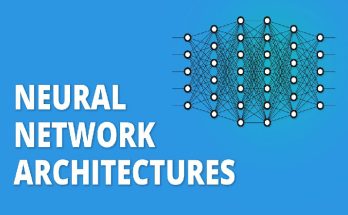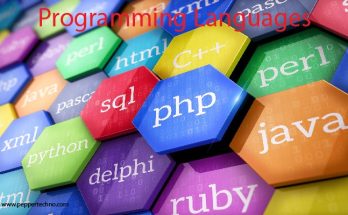Python Prowess in AI: Unleashing the Power of Programming
Welcome to the dynamic world where Python meets Artificial Intelligence, forming a powerhouse duo that is revolutionizing the way we perceive technology. In this blog post, we will delve into the realm of Python prowess in AI, exploring how this versatile programming language is unleashing groundbreaking advancements and innovations in artificial intelligence development. So buckle up as we journey through the exciting landscape where coding meets creativity!

The Versatility of Python for AI Development
Python’s versatility in AI development is truly unmatched. It’s simple and clean syntax allows for easy readability, making it a favorite among developers of all levels. The vast array of libraries and frameworks available in Python provides endless possibilities for implementing complex AI algorithms with ease.
Whether you’re working on natural language processing, computer vision, or machine learning models, Python offers the tools necessary to bring your ideas to life. Additionally, its strong community support means that help is always just a few clicks away.
With Python’s flexibility and scalability, developers can quickly prototype new AI applications and iterate on existing ones efficiently. This agility is crucial in the rapidly evolving field of artificial intelligence where innovation is key to staying ahead.
In essence, Python’s adaptability makes it the ideal programming language for pushing the boundaries of what AI can achieve.
Key Features of Python for AI Programming
Python stands out as a top choice for AI programming due to its simplicity and readability. Its extensive libraries like Tensor Flow and PyTorch provide powerful tools for machine learning tasks. Python’s dynamic typing feature allows for flexibility in coding, making it easier to prototype and experiment with AI algorithms.
Moreover, Python’s strong community support ensures that developers have access to a vast pool of resources and documentation. The language’s scalability makes it suitable for both small-scale projects and large enterprise applications in the field of artificial intelligence.
With built-in data structures and high-level dynamic typing, Python streamlines the development process by reducing the need for complex syntax. Additionally, its compatibility across various platforms enables seamless integration with other technologies commonly used in AI development.
Common Applications of Python in AI
Python’s versatility shines through in a myriad of AI applications. From natural language processing to image recognition, Python plays a pivotal role in driving innovation and efficiency in the field of artificial intelligence.
One common application of Python in AI is machine learning. With libraries like Scikit-learn and Tensor Flow, developers can easily implement complex algorithms for tasks such as classification, regression, and clustering.
Another popular use case is deep learning. Frameworks like Keera’s and PyTorch leverage Python’s simplicity and readability to build neural networks for sophisticated tasks like speech recognition and object detection.
Python also finds its way into reinforcement learning applications, where agents learn to make sequential decisions by interacting with an environment. This approach is widely used in autonomous vehicles, robotics, and game playing algorithms.
The diverse range of applications showcases Python’s adaptability and robustness in driving advancements across various domains within artificial intelligence.
How to Get Started with Python for AI Development
So, you’ve decided to dive into the exciting world of Artificial Intelligence with Python as your trusty companion. The first step in getting started is to familiarize yourself with the basics of Python programming language.
Python’s simplicity and readability make it a great choice for beginners. There are numerous online resources available such as tutorials, courses, and forums where you can learn Python at your own pace.
Once you have a good grasp of Python fundamentals, it’s time to explore libraries like Tensor Flow, Keera’s, and Scikit-learn which are essential for AI development. These libraries provide pre-built functions and tools that streamline the process of building AI models.
Practice makes perfect! Start by working on small projects to apply what you’ve learned. Experiment with different algorithms and datasets to gain hands-on experience in AI development using Python.
Stay curious and don’t be afraid to ask questions or seek help from the vast community of developers who are passionate about AI and Python programming. Remember, continuous learning is key to mastering the art of AI development with Python by your side.
Advancements and Innovations in AI Made Possible by Python
Python’s role in advancing artificial intelligence (AI) cannot be overstated. The language’s simplicity and readability have paved the way for groundbreaking innovations in AI applications. With its extensive libraries like Tensor Flow and PyTorch, Python has enabled developers to create sophisticated machine learning models with ease.
One of the key advancements made possible by Python is the development of deep learning algorithms that power various AI technologies such as image recognition, natural language processing, and autonomous vehicles. These algorithms have revolutionized industries like healthcare, finance, and cyber security by providing more accurate predictions and insights.
Moreover, Python’s flexibility allows researchers to experiment with new AI concepts quickly, leading to continuous improvements in AI capabilities. From reinforcement learning techniques to neural network architectures, Python provides a solid foundation for exploring cutting-edge solutions to complex problems.
In essence, Python continues to drive innovation in the field of artificial intelligence by empowering developers and researchers to push the boundaries of what is possible.
Challenges and Limitations of Using Python in AI
When it comes to utilizing Python for AI development, there are a few challenges and limitations that developers may encounter along the way. One of the key challenges is the performance issue when dealing with large datasets or complex algorithms. Python’s dynamic typing can sometimes lead to slower execution speeds compared to statically typed languages.
Another limitation is in handling low-level system tasks due to its high-level nature. This can pose difficulties when working on projects that require direct hardware interaction or real-time processing.
Moreover, Python’s Global Interpreter Lock (GIL) can hinder parallel processing capabilities, affecting scalability in certain AI applications. While there are workarounds like multiprocessing and multithreading, they add complexity to the codebase.
Additionally, Python’s extensive library support can be a double-edged sword as maintaining compatibility between different libraries and versions can be challenging at times. Despite these challenges and limitations, Python remains a powerful tool in driving advancements in artificial intelligence research and application development.
Conclusion: The Future of AI with Python at the Helm
Python’s dominance in AI development is undeniable. Its versatility, ease of use, and extensive libraries make it the preferred choice for professionals and enthusiasts alike.
As Python continues to evolve and adapt to the ever-changing landscape of artificial intelligence, we can expect even more groundbreaking advancements in this field. With Python at the helm, the future of AI looks promising, with endless possibilities waiting to be explored and harnessed.
So whether you are a seasoned developer or just starting out on your AI journey, embracing Python as your programming language of choice will undoubtedly open doors to innovation and transformation in the realm of artificial intelligence. Let’s stay curious, keep coding, and watch as Python propels us into a future where AI knows no bounds.



